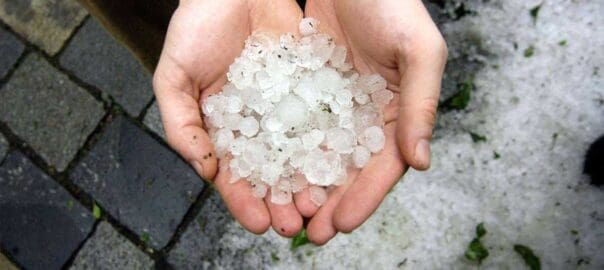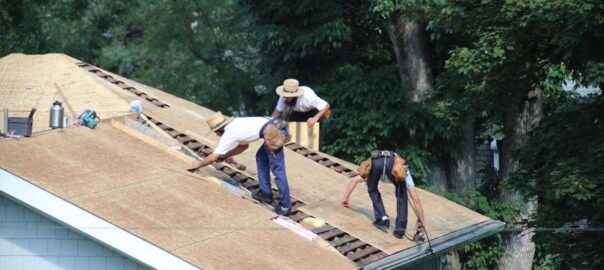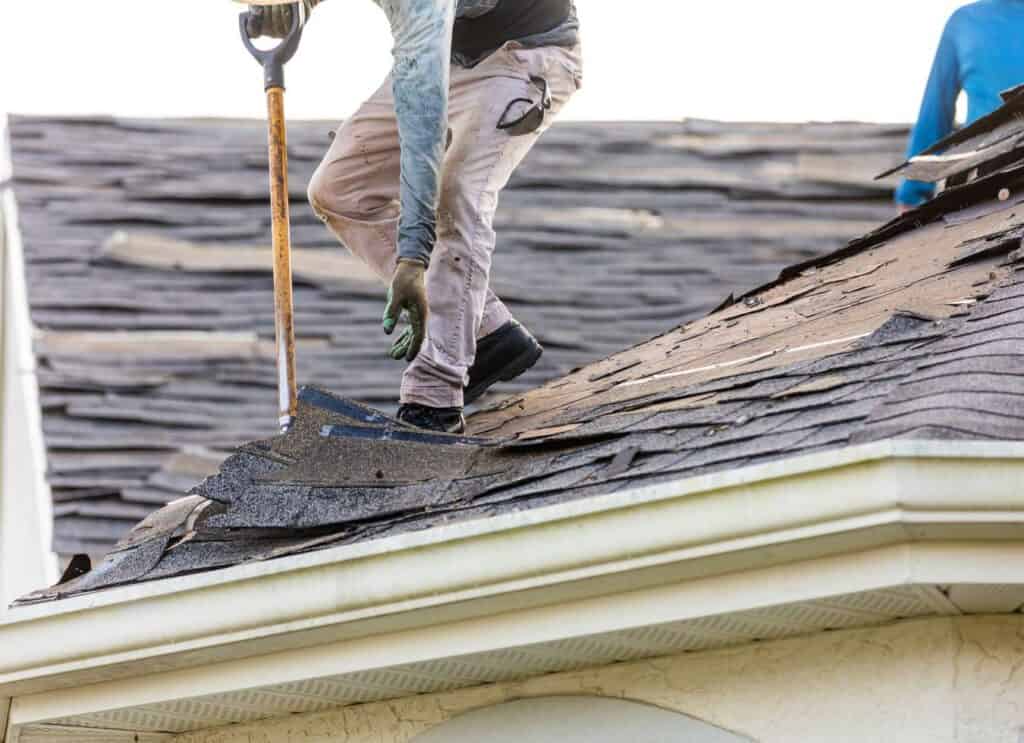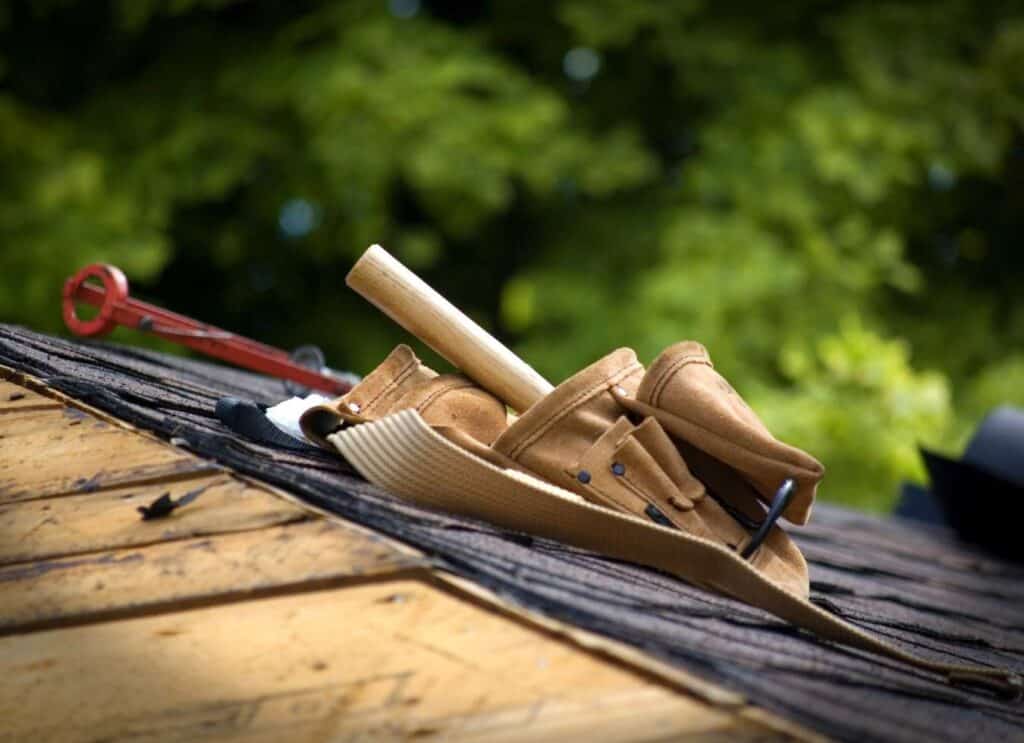If you’re a homeowner on the Colorado Front Range, you know our weather can be as unpredictable as a reality TV plot twist. One minute, you’re basking in 75-degree sunshine, and the next, BAM – a hailstorm rolls in with stones the size of golf balls, leaving behind potential damage from hail. It’s enough to make anyone’s head spin, especially if you’ve just invested in a new roof.
And let’s face it, no one wants to deal with hail damage. From cracked shingles to leaks, hailstorms are one of the leading causes of roof damage on the Front Range. So, the big question is: What can you do to protect your roof from hail damage? Is there anything that can shield your home from the wrath of those little ice bullets?
The good news is that the answer is yes. While you can’t control Mother Nature (we’ve all tried), there are several steps you can take to protect your roof from hail and minimize the damage. Think of it as upgrading your home’s armor for the next round of Colorado’s wild weather.
Let’s dive in, and by the end of this post, you’ll be the superhero of your neighborhood—your roof’s hail defense team. Ready? Let’s get into it!
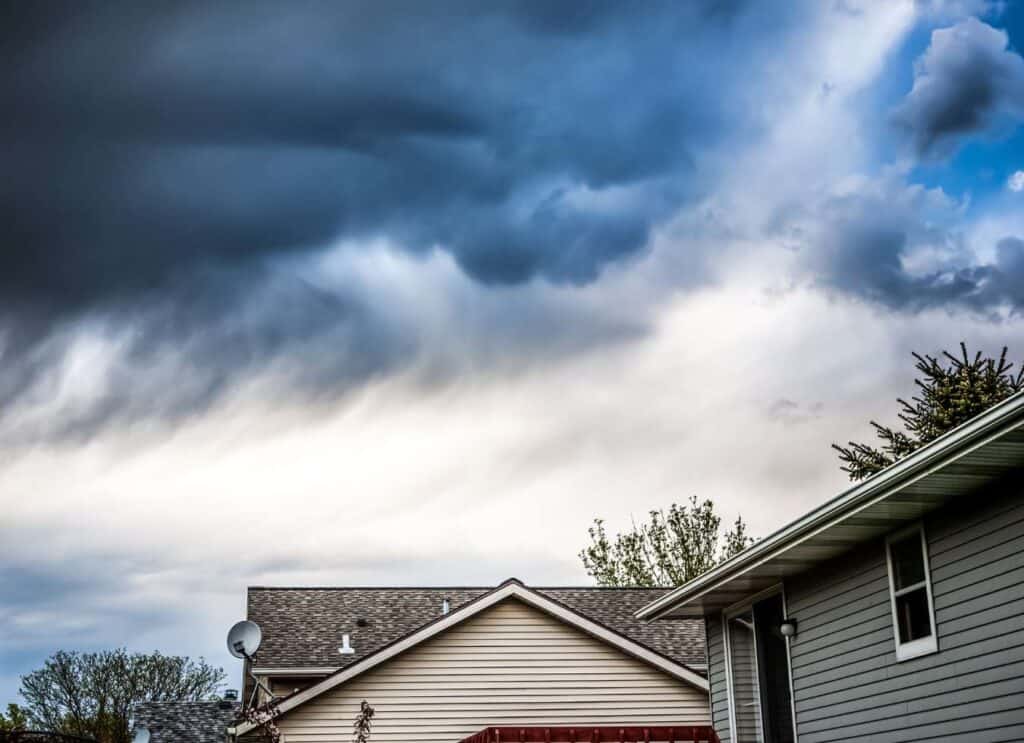
Why Hail Is Such a Big Deal on the Colorado Front Range
Before we get into how to protect your roof, let’s talk about why hail is a significant concern in Colorado. If you’ve lived here in the Denver metro area for any time, you’ve probably witnessed a hailstorm firsthand. One minute, it’s sunny; the following—boom, it’s like someone’s throwing ice cubes the size of golf balls onto your roof. And while a few cold showers of hail might seem harmless, they can cause significant damage.
Here’s why:
- Hailstones are fast and heavy: They aren’t your average snowflakes. Some hailstones can travel up to 100 mph (like a car’s speed on a highway). Depending on the size of the hailstone—anywhere from pea-sized to golf ball-sized—the impact can be pretty intense.
- Colorado’s unique geography: The Colorado Front Range is a prime spot for hail-producing storms. With the Rocky Mountains to the west and the plains to the east, this area creates the perfect stormy conditions for hail to form, making it essential to have a reliable roofing contractor.
- Hail can be frequent: If you’ve lived here for any time, you’ve probably had a few storms sneak up on you. April, May, and June are the primary months for hailstorms, but don’t be surprised if hail shows up in late summer or fall.
But here’s the thing—while hail can be a scary force of nature, the good news is you don’t have to sit back and wait for the damage to happen. There are plenty of proactive measures you can take to protect your roof.
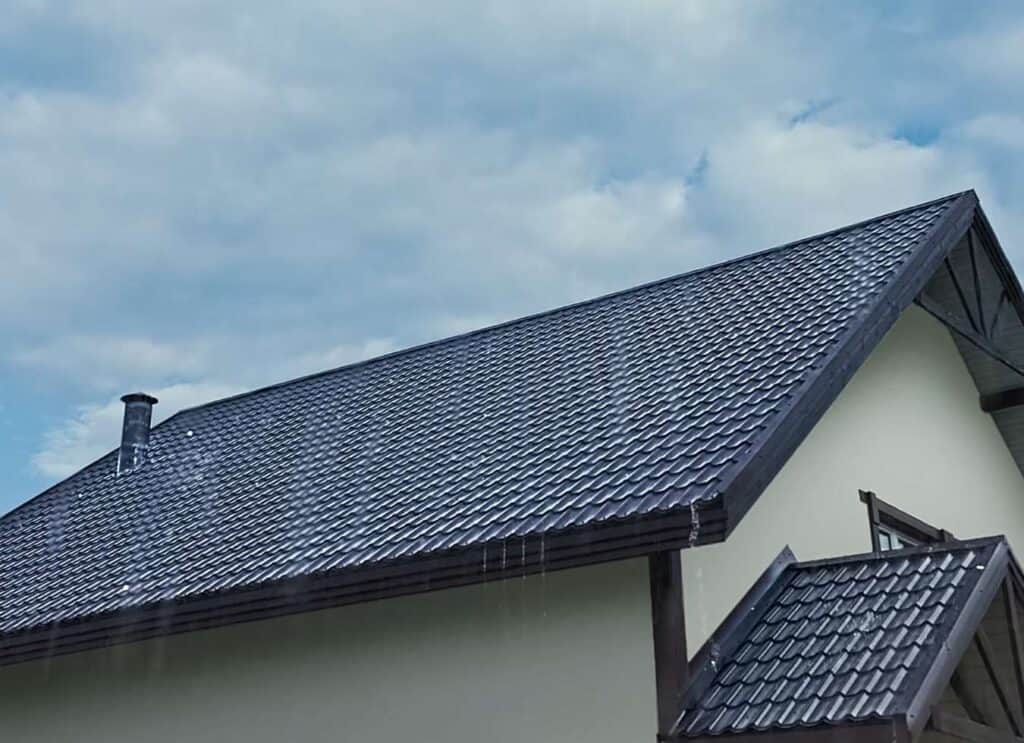
Step 1: Choose Hail-Resistant Roofing Materials
The first step in hail damage prevention is choosing the right roofing material. This is like building your house’s shield before the battle starts.
Some roofing materials are more durable than others when it comes to hail. If you live in an area prone to hailstorms (like here on the Front Range), it’s worth investing in Class 4 IR roofing materials for better protection. Impact-resistant shingles are particularly important for roof damage repair after a severe hailstorm. These shingles are designed to withstand the force of hailstones without cracking or breaking.
Here are some hail-resistant options:
1. Class 4 Impact-Resistant Shingles
This is the gold standard for roof protection against hail. Class 4 shingles are rated to withstand the largest hailstones and the heaviest impacts. They’re often made from materials like asphalt or fiberglass and have been specially designed to absorb the shock of hail.
Why are they awesome?
- They resist cracking or breaking when struck by hail.
- Insurance companies often offer discounts for homes with Class 4 shingles because they reduce the risk of hail damage.
- These shingles come in various styles and colors, so you don’t have to sacrifice curb appeal for protection.
Some top brands that offer Class 4 shingles include Malarkey Roofing Products (their Legacy and Vista shingles), CertainTeed, and GAF. These brands provide various impact-resistant options that are perfect for our Colorado weather.
2. Metal Roofing
Another excellent option for hail protection is metal roofing. Metal is naturally durable and can withstand hail without denting, cracking, or breaking. While it may not be the most common roofing material for homes (it is often used on commercial buildings), metal roofs are gaining popularity in hail-prone areas.
Why metal? It’s rugged and lightweight and sheds hailstones quickly.
Bonus: Metal roofs have reflective properties. Roofing materials help with energy efficiency and keep your home cooler in the summer, and they can protect against hail damage.
3. Tile Roofing
Tile roofing can be a good choice for hail resistance, especially for hail-damaged roofs. Concrete or clay Tiles, which can withstand impacts, are a good choice for hail resistance and roof replacement. They’re known for their strength and longevity, though they may not be as common in Colorado as asphalt shingles. If you have a tile roof, you can rest easy knowing it has a solid reputation for withstanding hail.
However, tile roofs can be much more expensive than asphalt shingles and are more prone to breaking when hail is particularly severe.
Step 2: Regular Roof Inspections and Maintenance
Even if you have a hail-resistant roof, you must stay on top of roof maintenance. Over time, wear and tear can compromise your roof’s ability to handle hail impacts. The key here is regular roof inspections.
How Often Should You Inspect Your Roof?
Spring and Fall are prime seasons for hailstorms, so it’s wise to prepare your roof. Make it a habit to check your roof at least twice a year—once in the spring before the hail season kicks off and once in the fall to prepare for the winter.
Assessing any potential roof damage after significant hailstorms is crucial. If a particularly severe storm has rolled through, it’s wise to inspect your roof for damage—even if you don’t notice any immediately.
What should you look for during an inspection?
- Loose or missing shingles: Hail can loosen or break shingles. If you have missing or damaged shingles, fixing them ASAP is essential to avoid further damage.
- Cracked shingles: Even tiny cracks can lead to leaks and water damage down the road.
- Hail dents: Look for visible dents in shingles or other roofing materials. This can be a sign that hail has already impacted your roof.
- Clogged gutters: Make sure your gutters are clear of debris. Clogged gutters cannot channel water away from your roof, leading to water damage.
Hiring a professional roofer for a thorough inspection is always a good idea, especially if you’re unsure what to look for. They’ll know exactly where to look for damage and can identify issues that might not be visible to the untrained eye.
Step 3: Protect Your Roof During Hailstorms
If a hailstorm is coming, it’s best to prepare beforehand. While you can’t put a giant bubble over your house to protect it (although that would be awesome), there are still a few ways to minimize potential damage during a storm.
Use Hail Guards
If you’re serious about protecting your roof, you can install hail guards. Protective covers are placed over vulnerable areas of your roof (like skylights or vents) to shield them from hail impacts.
Trim Overhanging Branches
Before the storm hits, trim any branches or limbs hanging over your roof. Hailstones can cause branches to break, and falling debris can damage your roof. An overhanging tree might cause more debris to collect on your roof, leading to clogs in your gutters.
Step 4: Get the Right Insurance Coverage
Even with all the preparation in the world, hailstorms can still cause some damage. That’s why ensuring your home insurance policy covers hail damage is essential. Many insurance claims cover hail damage, but it’s necessary to document the damage thoroughly.
If you live in a hail-prone area like Colorado, talk to your insurance agent about getting a policy that covers roof repairs due to hail. Some insurance policies even offer coverage for hail-damaged roof claims. If you have impact-resistant shingles can be a great way to save money.
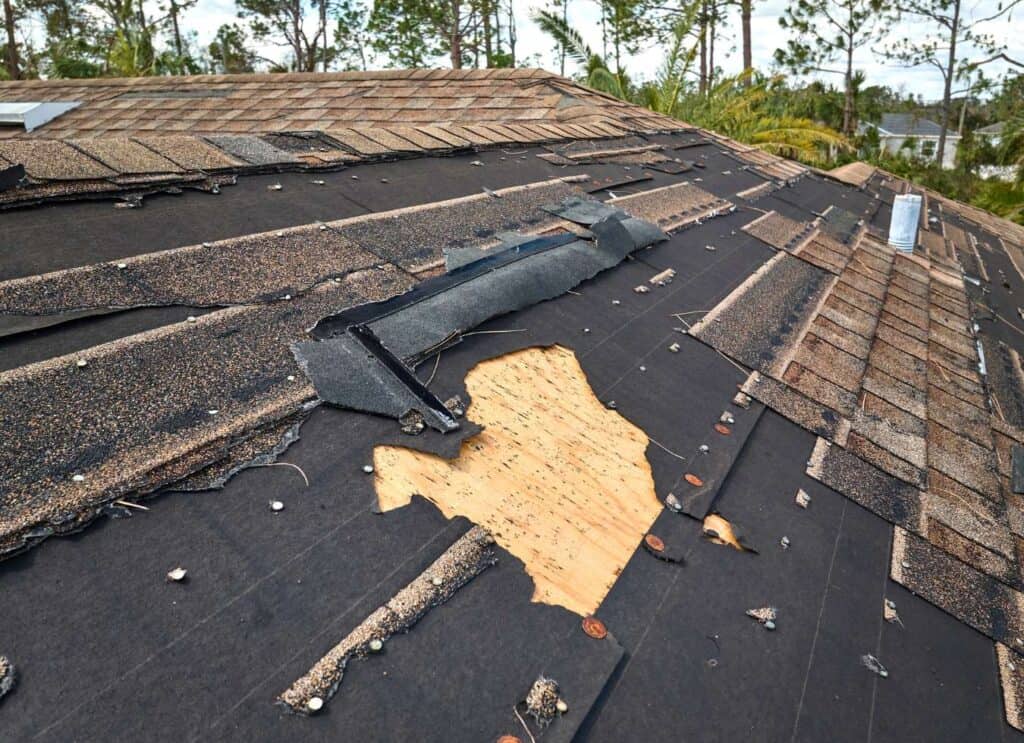
Other Popular Questions Related to Roof Damage from Hail
Q: What type of roof is most hail-resistant for homes in Colorado Springs?
A: A class 4 asphalt shingle roof is considered highly hail resistant and recommended for Colorado Springs homes to protect against hail damage. These shingles are designed to withstand severe weather conditions, reducing the likelihood of damage.
Q: How can I protect my home from hail damage in Colorado?
A: To protect your home from hail damage in Colorado, consider installing hail-resistant roofing materials, such as class 4 asphalt shingles. Regular maintenance, such as inspecting and repairing existing damage, can also help prevent further issues during a hailstorm.
Q: How do I know if I need a complete roof replacement after a hailstorm?
A: A complete roof replacement may be necessary if your roof has significant damage, such as missing shingles or exposed underlayments. Consult with professional roofing companies for an inspection to assess the extent of the damage and determine the best course of action.
Q: What should I do if I suspect hail damage to my roof?
A: If you suspect hail damage to your roof, contact a reputable roofing contractor to conduct a thorough inspection. They can identify issues and recommend whether you need a repair or replacement. It’s also advisable to document the damage for your insurance claim.
Q: How does the insurance claim process work for hail damage roof repair?
A: The insurance claim process for hail damage roof repair typically involves contacting your insurance company to report the damage, providing documentation such as photos and inspection reports, and working with an adjuster to assess the damage. Reputable roofing companies can assist with this process.
Q: Are asphalt shingle roofs susceptible to hail damage?
A: Standard asphalt shingle roofs can be susceptible to hail damage, especially if they are older or not designed to withstand severe weather. Upgrading to hail-resistant options, like class 4 asphalt shingles, can offer better protection.
Q: What are the signs of roof damage from hail?
A: Signs of hail damage to roofs include dents or cracks in shingles, missing granules, and leaks in the attic or ceiling. It’s essential to address these issues promptly to prevent further damage.
Q: Can wind damage also affect my roof during a hailstorm?
A: Yes, wind damage can accompany hailstorms and exacerbate roof damage. High winds can lift shingles, causing them to detach or break, leading to leaks and further damage to your roof.
Q: How often should I inspect my roof for damage in Colorado?
A: You should inspect your roof at least twice a year after any significant hailstorm or severe weather event. Regular inspections can help identify and address damage before it becomes a more substantial issue.

In Conclusion: Protecting Your Roof from Hail Damage
Hailstorms can be brutal here on the Colorado Front Range, but with the proper precautions, you can protect your home from significant damage. From choosing the right hail-resistant roofing material to maintaining your roof with regular inspections, there are several steps you can take to ensure your roof is ready for anything.
At Denny’s Roofing, we specialize in helping homeowners like you get the most out of their roofing systems. Whether you need a roof inspection, a new hail-resistant roof, or guidance on dealing with storm damage, we’ve got you covered.
Don’t let the next hailstorm catch you off guard—take action now and protect your roof. You’ll sleep soundly, knowing your roof is built to handle anything the Colorado weather throws its way!

